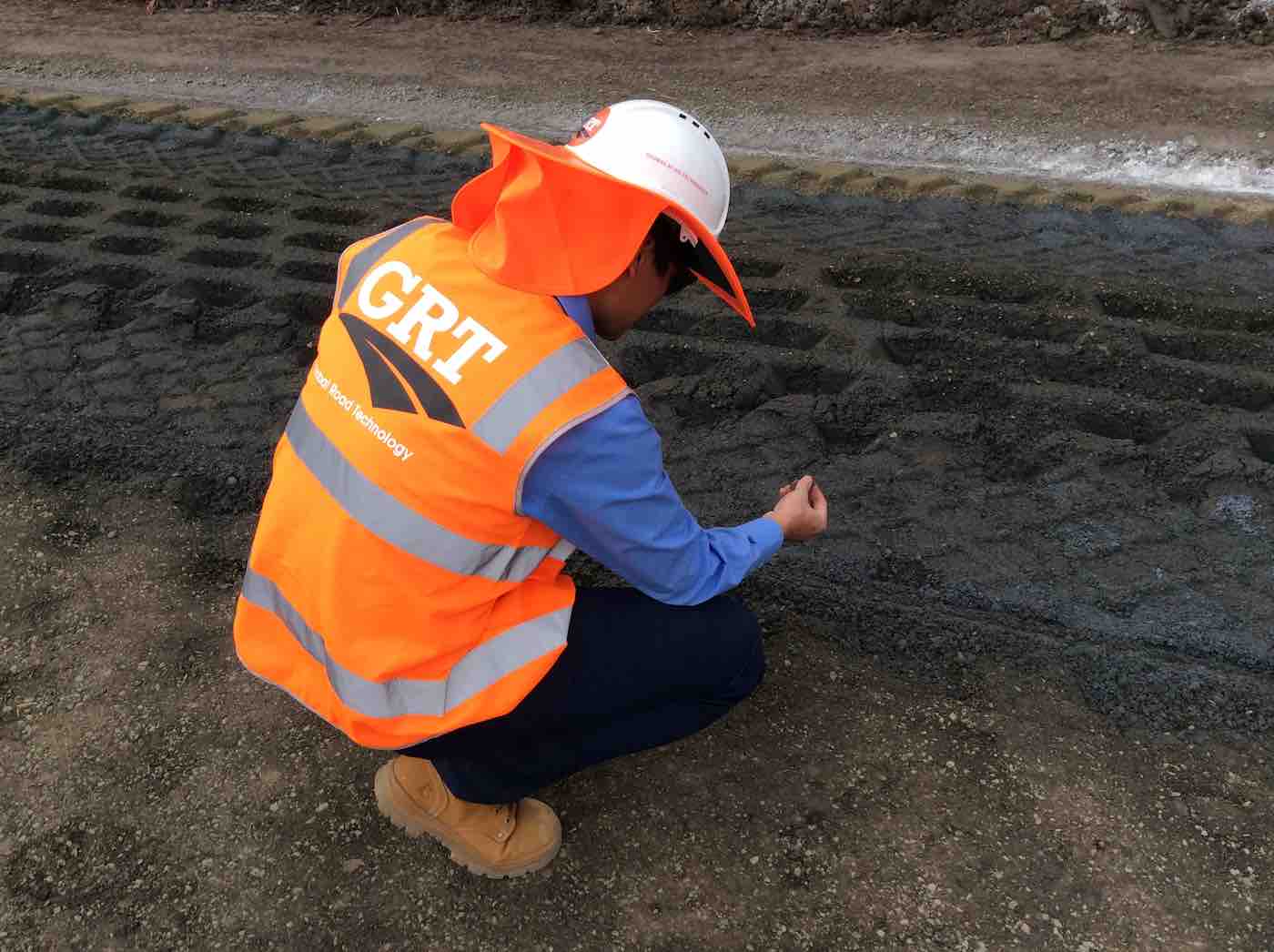
Soil ameliorants are inorganic and organic chemical soil conditioning products applied to enhance the quality of soil and therefore improve plant health, growth and revegetation. Soil ameliorants are used in mining, farming, erosion control, sediment control, and construction projects. There are several physico-chemical properties of soil that are improved by adding soil ameliorants. These are the soil properties improved by soil ameliorants:
In this article we evaluate the different soil ameliorants and wrap up with GRT soil amelioration solutions.
There are different types of soil ameliorants, and their uses depend on their availability, cost and ability to improve plant growth whilst supporting sustainable soil quality and health. These are the different types of soil ameliorants:
Vermicompost: it involves the biooxidation and stabilization of organic materials depending on the combined effect of earthworms and microorganisms, where the earthworms maintain aerobic conditions, ingest solids, convert a portion of the organics to worm biomass, respiration products and expel partially stabilized matter as vermicompost. The contribution of vermicompost is as follows:
Gypsum: is a source of soil calcium and sulphur with the chemical formula CaSO4:2H2O. It is an ideal soil ameliorant for hard compacted soils with poor water penetration or sodicity. The role of gypsum as a soil ameliorant includes:
Lime: ameliorating the soil with lime is a common method of reducing soil acidity and depending on which form of lime used calcium and magnesium can be added by applying calcitic and dolomitic lime respectively. The role of lime as a soil ameliorant includes:
Fly ash: is a byproduct of coal combustion, and it consists of tiny glass-like particles. The impact of fly ash on soil quality is primarily attributable to the changes in the texture of soil. Alteration in the soil texture is correlated with:
All these have a direct impact on plant growth and on the nutrient retention and biological activity of the soil.
Mycorrhiza: there are different species of mycorrhizal fungi with examples such as Glomus intraradices. The inoculum consists of a mixture of rhizospheric soil from pot cultures containing spores, hyphae and mycorrhizal root fragments. Inoculation of fungi does the following to soil as an ameliorant:
Soil microorganisms: the soil microbes are responsible for most for most of the conversion of the dead roots into humus. The living fraction of soil makes it favorable for plants to grow. The role of soil microorganisms is as follows:
Animal manure: it is sourced from the farmyard manure and other animal/bird wastes. It enhances soil organic matter which improves microbial stimulation. Traditionally, animal manure has been utilized for several soil ameliorants purposes:
Sewage sludge: is one of the major solid organic wastes from sewage treatment plants that is utilized to promote rapid growth of plant cover for rehabilitation as an organic soil ameliorant. The importance of sewage sludge is as follows:
Press mud: is a lightweight abundantly available waste product from the sugar industry. Press mud is a beneficial form of waste recycling which reclaims acid and alkaline soils. It reduces plant uptake of toxic metals and improves soil tilth. It contains crude wax, fiber, crude protein, sugar, SiO, CaO, PO4, MgO and total ash. It can be used as a rich source of:
Biochar: is a charcoal material produced as a by-product of the pyrolysis of biomass and because of its relatively stable, and inert nature, its incorporation in soil is an opportunity to increase carbon sequestration. This carbon rich material provides the following to the soil:
Fertilizer: there are two forms of fertilizers, inorganic and organic that can be used to promote soil quality. Fertilization using inorganic fertilizers is common. Biofertilizers contain microorganisms, providing direct or indirect positive effects on plant growth and crop yield through different mechanisms. Fertilizers offer the following to soil:
Product: GRT: Enviro-Binder
Key product benefits:
Product: Soil-Loc
Key product benefits:
Soil ameliorants are calcium sources for short, medium and long term calcium provisions for soils that have low calcium and pH. The use of microbes improves slow release of nitrogen and remediation of soils with low carbon using soil ameliorants can boost minerals, organics and carbon. Water retention is key especially in hydrophobic conditions and soil ameliorants can be used to support revegetation. Reach out to GRT for our soil ameliorants portfolio developed and formulated by Australia’s leading soil scientists and agronomists. The well calculated key ingredients provide you with significant savings on any of your projects.
Your feedback is important to us. If you enjoyed reading this Global Road Technology industry update and found it informative, please let us know by leaving a REVIEW.
REFERENCES
Are environmental regulations, health and safety concerns or potential profit loss a concern right now?
Contact Us Now